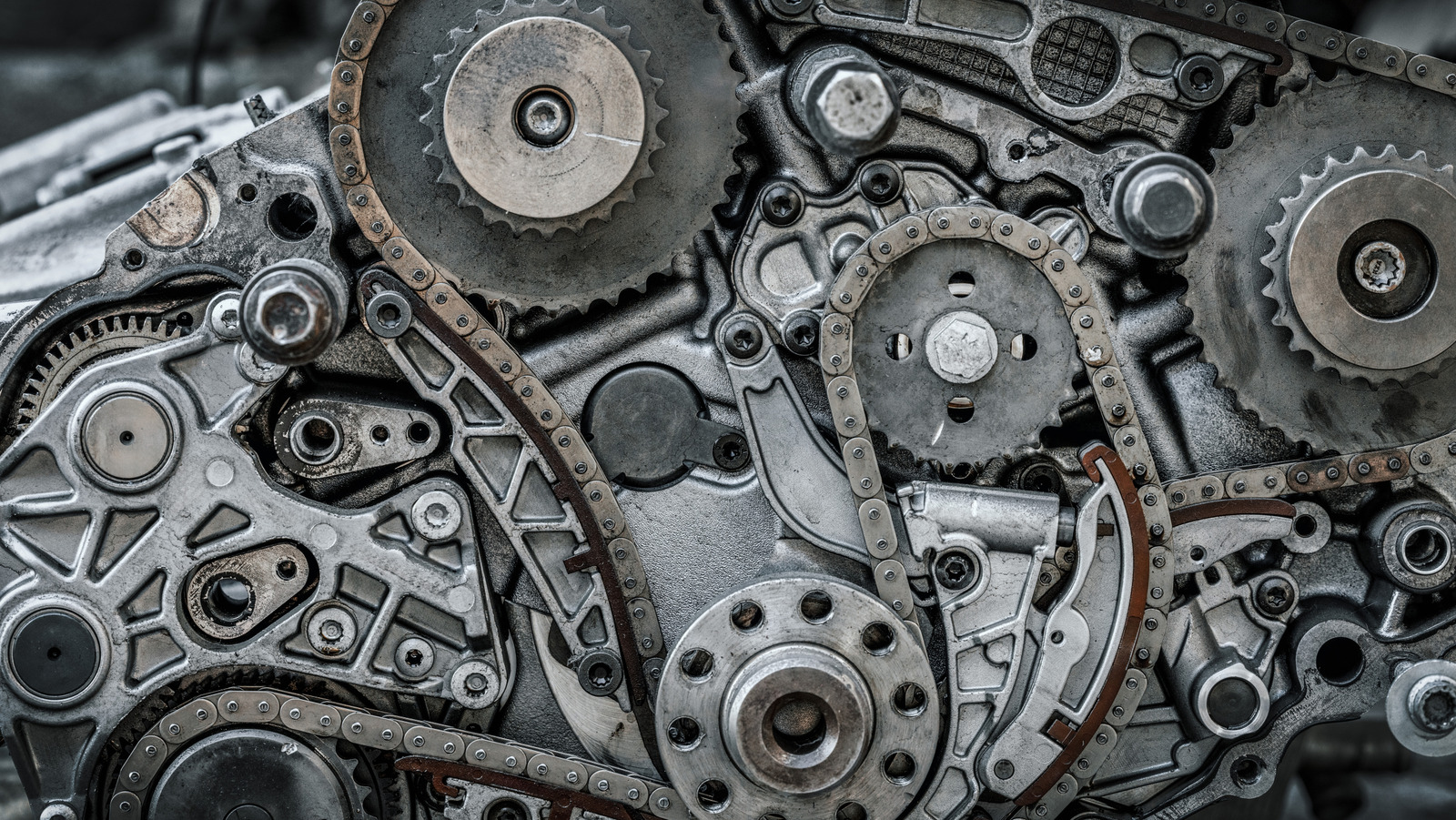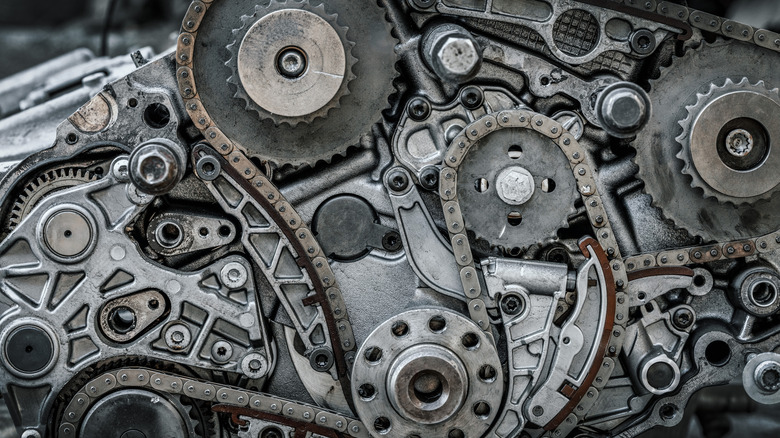Do you know what a timing belt or a timing chain is and what they do? Could you find them on your vehicle’s engine if you had to? If you answered no, don’t sweat it. Both are buried behind a lot of covers and engine accessories and are rarely thought about outside of scheduled maintenance (or if they fail). Their obscurity, however, belies their great importance. An engine can’t run without a timing belt or a timing chain, and depending on how an engine is designed, the failure of a timing belt or chain could lead to catastrophic engine failure.
So, what are they? Timing belts (and timing chains) are, in most cases, located on the front of an engine behind a sealed timing cover where they control engine valve timing. They do this by connecting the crankshaft to the engine’s camshaft or camshafts to ensure that the engine’s valves open at the proper time. This is different from ignition timing, which you also may or may not have heard of. Anyway, these important but often overlooked parts of your engine’s insides rotate around a series of pulleys (belts) or gears (chains) constantly as your engine is running. As you can imagine they can, and do, wear out which can lead to rough running, poor performance, and, worst case scenario, even a mulched engine.
What’s the difference, though, and why should you know which one your engine uses? Basically, it comes down to maintenance and potential repair costs.
Are you a timing chain or belt kind of person?
So, what’s the difference? Let’s start with their construction. A timing belt is a toothed rubber belt, typically reinforced with fiberglass, steel, or some other tough, flexible material. A timing chain looks like a motorcycle chain, is made of steel and other high-strength materials, and can be a single, double, or triple course depending on the application. However, one isn’t necessarily better than the other. They both have their uses and a number of pros and cons that tend to even them out.
Timing belts are relatively simple and great for efficient, low-power applications. They’re quiet and don’t require any lubrication or other systems save for a tensioner or two. On the downside, belts wear out over time and need to be constantly checked for wear or breakage. A typical timing belt lasts around 100,000 miles (give or take, depending on the vehicle) and requires a fair amount of time and money to replace. You better replace it, too, or it might break and either leave you stranded or blow up your engine.
Typically used in older engines or in high-horsepower applications, timing chains are stout and reliable as a clock. On the downside, they’re heavy, loud, and require lubrication. They don’t (typically) break, but they do stretch over time and need to be adjusted (if possible) or replaced. Timing chains often last the lifespan of the vehicle they’re installed in, though the aforementioned stretching might cause some running issues as the vehicle ages.



